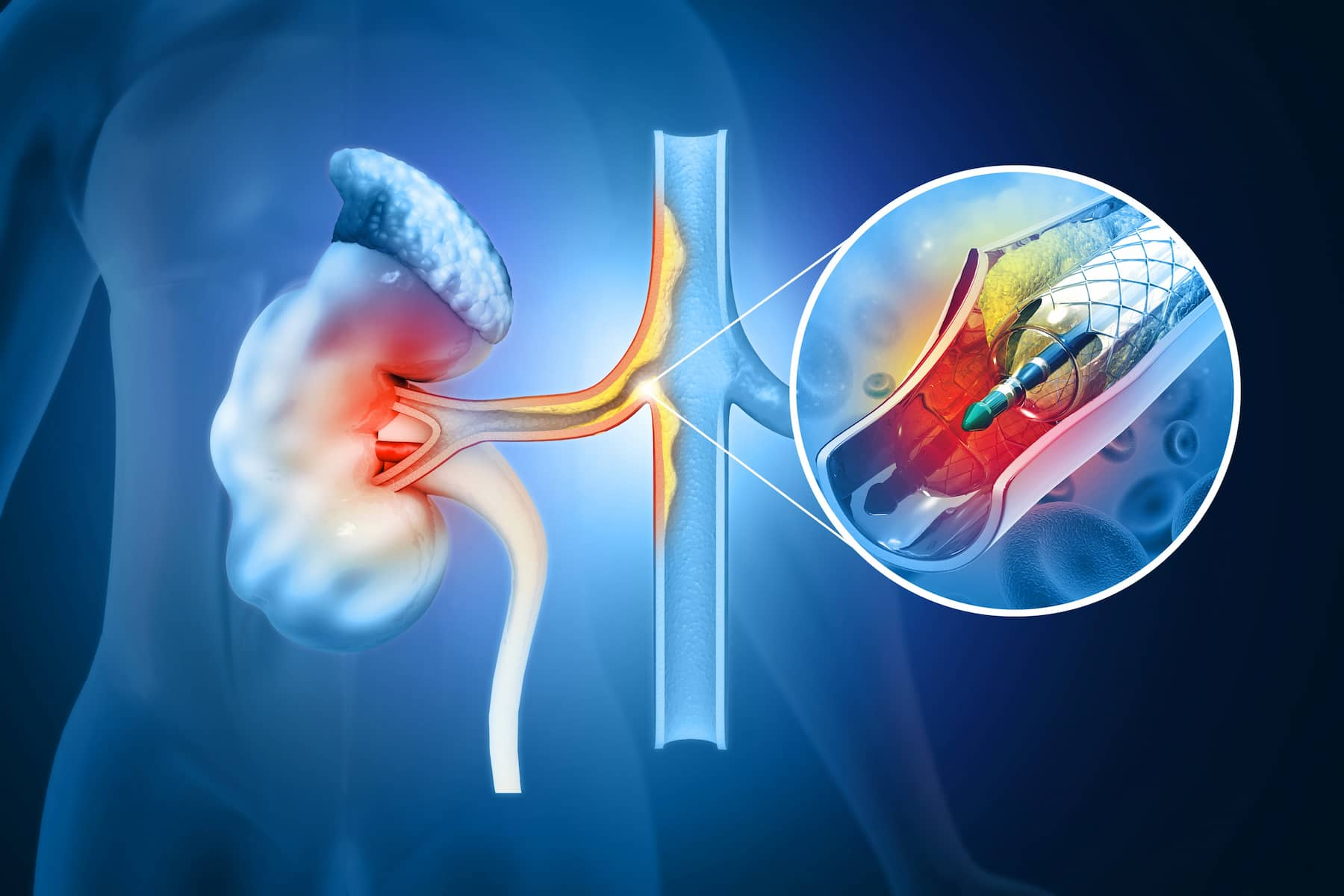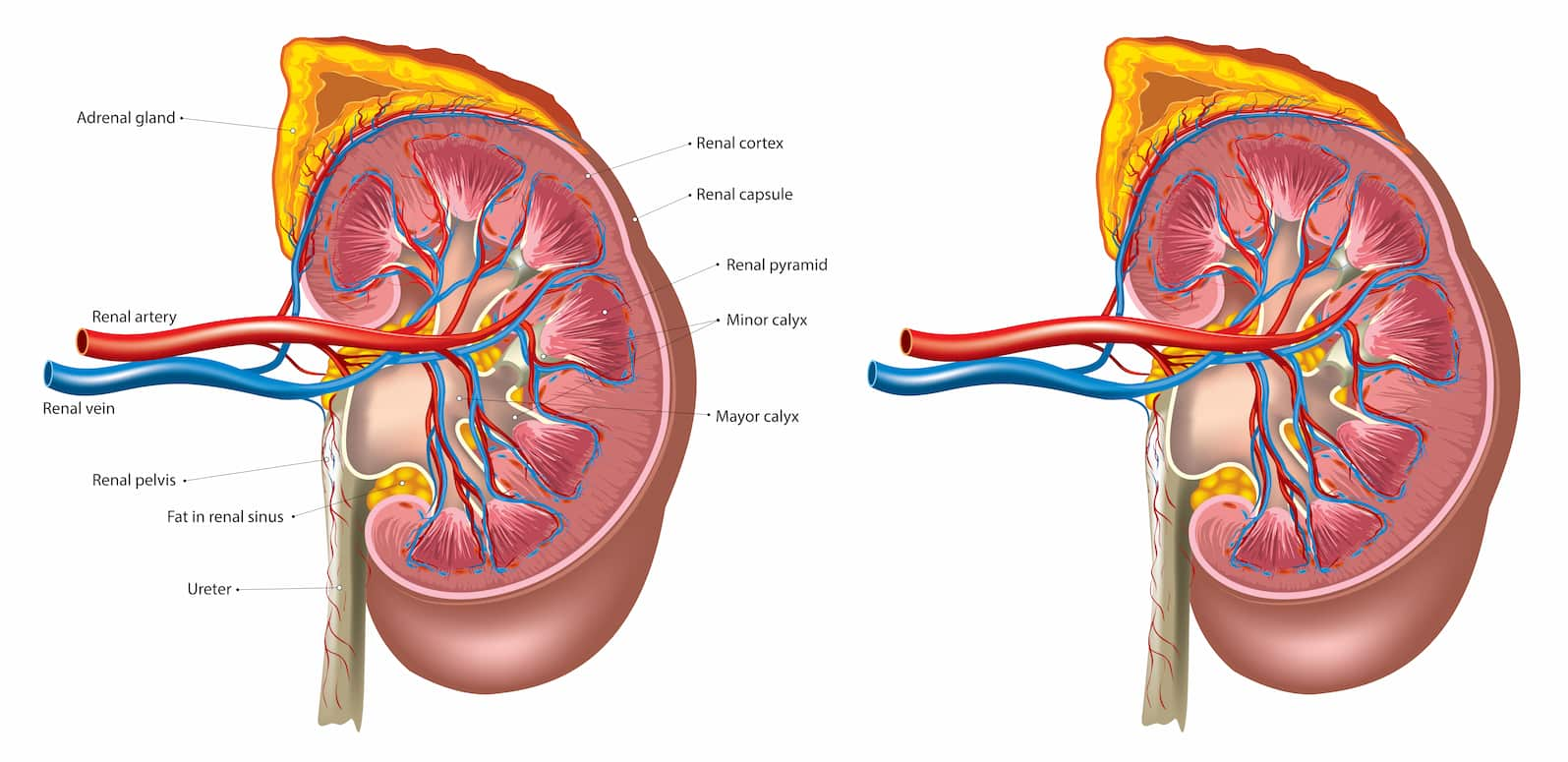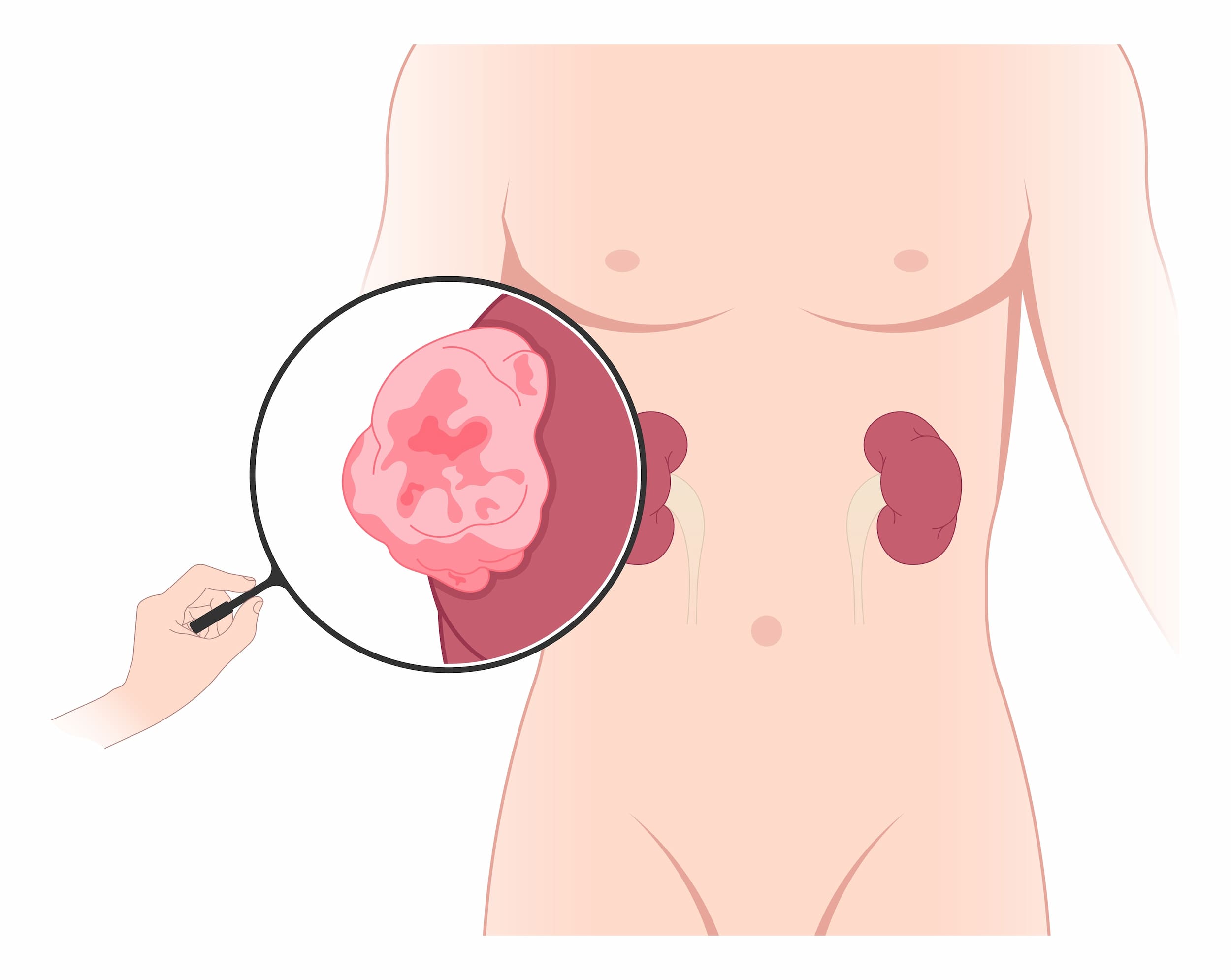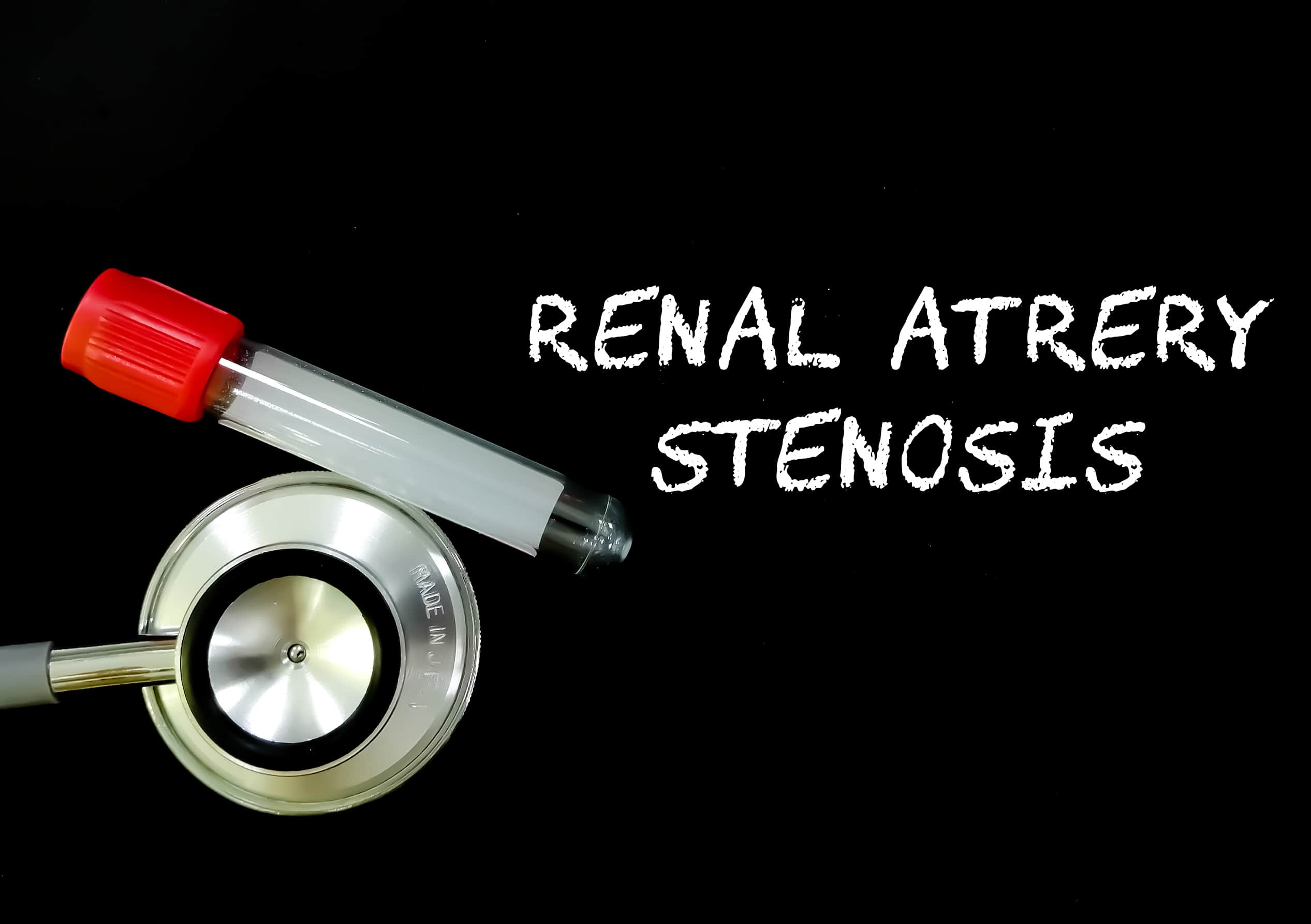Renal Artery Stenosis Treatment in Turkey
Healthy Türkiye helps you find the best renal artery stenosis treatment in Turkey at affordable prices and adopts a 360-degree service approach in all areas of health through affiliated hospitals.
- Medical Treatment
- Bladder Cancer Treatment in Turkey
- Enlarged Prostate Treatment in Turkey
- Kidney Stones Removal in Turkey
- Urology Treatment in Turkey
- Erectile Dysfunction Treatment in Turkey
- Laparoscopic Prostate Surgery in Turkey
- Prostatectomy Treatment in Turkey
- Vasectomy in Turkey
- Penis Enlargement in Turkey
- TURP Surgery in Turkey
- Glomerulonephritis Treatment in Turkey
- Urinary Retention Treatment in Turkey
- Hydrocele Treatment in Turkey
- Laser Lithotripsy in Turkey
- Percutaneous Nephrolithotomy in Turkey
- Peyronie’s Disease Treatment in Turkey
- Renal Artery Stenosis Treatment in Turkey
- Urinary Incontinence Treatment in Turkey
- Vasectomy Reversal Treatment in Turkey
- Homepage
- Medical Treatment
- Renal Artery Stenosis Treatment in Turkey

About Renal Artery Stenosis Treatment in Turkey
Renal artery stenosis treatment provides highly successful results with the latest technology and years of experience by specialist doctors in Turkey. Renal arteries are blood vessels that carry oxygenated blood to the kidneys, and they enter the kidney through an opening called the hilum and then branch off into smaller arteries that supply blood to the interior parts of the organ. The deoxygenated blood leaves through the renal vein.
Stenosis is a medical term used to define an abnormal narrowing of any passage of the body. So, renal artery stenosis means the narrowing of the kidney arteries. This disorder prevents the kidney from getting enough supply of oxygen-rich blood. When the body feels that not enough blood is reaching the kidneys, it takes certain measures to address what it believes to be low blood pressure. This action can cause high blood pressure that can injure the kidney tissue. When left untreated, renal artery stenosis can lead to potentially life-threatening conditions including heart failure, due to the hardening and narrowing of arteries that supply blood to the heart, abnormal kidney function, and stroke.
With Healthy Türkiye, the doctors trained in kidney diseases and high blood pressure (nephrology and hypertension), vascular medicine, diagnostic and therapeutic (interventional) radiology, and heart and blood vessel diseases (cardiovascular medicine) work together to evaluate and treat people with renal artery stenosis. Having all this expertise in a single place means that your care is discussed among the team, test results are available quickly, appointments are scheduled in coordination, and the most highly specialized heart experts in Turkey are all working together for your health.

Renal Artery Stenosis Treatment Procedure in Turkey
Renal artery stenosis treatment in Turkey is provided by a multidisciplinary team of doctors with expertise in kidney diseases and high blood pressure, vascular medicine, interventional radiology, and cardiovascular medicine. Renal artery stenosis basically is a decrease in the diameter of the renal arteries. The resulting restriction of blood flow to the kidneys may lead to impaired kidney function (renal failure) and high blood pressure, referred to as renovascular hypertension, or RVHT. It is estimated that renal artery stenosis accounts for approximately 1-2% of mild to moderate cases of high blood pressure. It can be responsible for more than 10-12% of cases of severely elevated or difficult-to-treat hypertension.
Renovascular hypertension is as likely to develop with bilateral stenosis (when arteries to both kidneys are narrowed) as with unilateral stenosis (when the artery to one kidney is narrowed). The decreased blood flow to the kidneys damages renal function.
Narrowing of the kidney arteries is more common in individuals 55 years of age and older. It is estimated that some degree of narrowing is found in about 18% of adults between 65-75 years of age and 42% of those older than 75 years of age. This can be due to the fact that atherosclerosis is more common in this age group. In younger patients, the narrowing of the renal artery usually is due to the thickening of the artery and it is more common in women than men.
Healthy Türkiye provides advanced diagnosis and treatment in Turkey for patients with renal artery disease. State-of-the-art techniques, including endovascular treatment of renal artery stenosis, are available for our patient’s health.
Causes of Renal Artery Stenosis
Renal artery stenosis can affect any person of any age, but it is most common in older people (>50 years old) who have hypertension, uncontrolled diabetes, abnormal cholesterol levels, and other vascular disease.
Usually, renal artery stenosis is caused by atherosclerosis in which plaque, which is made up of cholesterol, fat, calcium, and other substances found in the blood, builds up inside any artery in the body. When small traces of these substances are left behind in the renal artery, they can accumulate and harden over time. This may cause the narrowing of the renal arteries as well as scarring of the kidney.
Rarely, renal artery stenosis is caused by fibromuscular dysplasia, which causes abnormal growth within the wall of an artery and this results in narrow sections in the artery that make it difficult for blood to flow through smoothly. The exact reason for fibromuscular dysplasia is unknown but it is believed to be congenital.
There are no needles, just a slight tingling sensation best describes the feeling experienced during an IPL treatment. This is minimized by a specially developed cryo-handset that is placed on the skin before the treatment. So, IPL treatment in Turkey is infinitely more comfortable than most conventional methods like waxing, laser and electrolysis, and many other laser systems.
Other likely causes of renal artery stenosis are:
Compression of the kidney arteries due to abnormal growth or tumor on surrounding systems in the abdomen.
Vasculitis: It is an autoimmune disorder in which the blood vessels are attacked by the immune system, causing them to become inflamed.
Neurofibromatosis: It is a genetic neurological disorder that causes tumors to grow along nerves.
Besides, the renal arteries and their branches can also be blocked when a blood clot that has formed elsewhere in the body gets stuck in them or when they are damaged or injured during certain medical procedures. This is a more severe condition because it results in total blockage of blood flow to the kidneys.
Diagnosis for Renal Artery Stenosis Treatment in Turkey
The doctors can diagnose renal artery stenosis by listening to the abdomen with a stethoscope and performing imaging tests. When blood flows through a narrow artery, it occasionally makes a whooshing sound, called a bruit. The doctors may place a stethoscope on the front or the side of the abdomen to listen for this sound. The absence of this sound, however, does not exclude the possibility of renal artery stenosis.
In some cases, renal artery stenosis can be found when a person has a test for another reason. For example, a doctor may find renal artery stenosis during a coronary angiogram for diagnosis of heart problems. A coronary angiogram is a procedure that uses a contrast medium, and x-rays to see how blood flows through the heart.
The following imaging tests often are used to diagnose renal artery stenosis in Turkey:
Duplex ultrasound: Duplex ultrasound is a combination of traditional ultrasound and Doppler ultrasound. Traditional ultrasound uses a device that bounces safe, painless sound waves off organs to create an image of their structure. Doppler ultrasonography documents sound waves reflected off of moving objects, such as blood, to measure their speed and other aspects of how they flow.
The procedure is performed in a health care provider’s office, outpatient center, or hospital by a specially trained technician. The images are interpreted by a radiologist. The results can show blockage in the renal artery or blood moving through nearby arteries at a lower-than-normal speed.
Catheter angiogram: A catheter angiogram, also called a traditional angiogram, is a special kind of x-ray in which a thin, flexible tube is threaded through the large arteries, often from the groin, to the artery of interest. This procedure is performed in a hospital or outpatient center by a radiologist. A contrast medium can be injected through the catheter so the renal artery shows up more clearly on the x-ray. A catheter angiogram is the “gold standard” for diagnosing renal artery stenosis due to the high quality of the image produced.
CTA scan: CTA scan is a combination of x-rays and computer technology to create images. The procedure can be performed in an outpatient center or hospital by an x-ray technician, and the images are interpreted by a radiologist. A contrast medium is injected into a vein in the person’s arm to see the structure of the arteries better.
This scan requires the person to lie on a table that slides into a tunnel-shaped device where the x-rays are taken. CTA scans are less invasive than catheter angiograms and take less time, however, the risks from the x-ray radiation still exist. The test often requires more contrast medium than a catheter angiogram, so it may not be recommended for a person with poor kidney function.
MRA (Magnetic resonance angiogram): MRA uses radio waves and magnets to produce detailed pictures of the body’s internal organs without using x-rays. The procedure can be performed in an outpatient center or hospital by an x-ray technician, and the images are interpreted by a radiologist. A contrast medium may be injected into a vein in the person’s arm to see the structure of the arteries better. With most MRA scans, the person lies on a table that slides into a tunnel-shaped device that can be open-ended or closed at one end; some newer machines are designed to allow the person to lie in a more open space.
In addition to providing high-quality images noninvasively, this test can provide a functional assessment of blood flow and organ function. However, the use of a contrast medium for an MRA is not recommended for people with poor kidney function because of the risk of complications to the skin and other organs if the kidneys do not remove the contrast medium well enough.

We Care About Your Health
Healthy Türkiye provides the best for your health and comfort. You will feel privileged with us.
7/24 Quality Personal Assistance Throughout Your Journey
Customizable for You All-Inclusive Packages
Get the Right Advice for your Health
Types of Renal Artery Stenosis Treatment in Turkey
Renal Artery Stenosis Surgical Treatments in Turkey
The specialists sometimes perform surgery to manage the symptoms of renal artery stenosis and prevent complications. Good candidates for surgery are people with severe narrowing greater than 60 to 70 % of the artery’s diameter. People without symptoms or evidence of damage to the arteries or kidneys usually don’t require surgery.
Percutaneous Balloon Angioplasty and Stenting
Angioplasty with stent placement is typically the first procedure used for people with renal artery stenosis. Because it’s minimally invasive and involves less recovery time than conventional surgery. Percutaneous balloon angioplasty and stenting are used to increase blood flow to the kidneys, lower blood pressure, and prevent complications such as kidney damage.
During a percutaneous balloon angioplasty, a surgeon makes a small incision in the thigh and guides a flexible tube called a catheter through the femoral artery and into the narrowed renal artery. The surgeon then inflates a surgical balloon, which is located at the tip of the catheter, pushing the plaque against the inner walls of the artery to allow for better blood flow. This procedure is generally performed immediately after an arteriogram, which is used to diagnose renal artery stenosis.
Next, your vascular surgeon typically places a stent in the blood vessel to act as “scaffolding.” The stent keeps the artery open, increasing blood flow to the kidneys, and remains in place permanently. During the procedure, a series of X-rays, called fluoroscopy, is used to help the surgeon visualize the catheter and stent inside the artery. The procedure can last 30 to 90 minutes, depending on the severity of the narrowing.
Angioplasty and stenting are performed using local anesthesia and sedation. Your doctor determines how long you stay in the hospital based on your medical history and overall health, some people are able to go home on the day of the procedure. After returning home, you can expect to resume your daily activities within 2 days. Most patients are placed on an antiplatelet medication, such as aspirin or clopidogrel, to prevent platelets in the blood from sticking to the stent, causing clots.
Renal Artery Bypass
In this surgery, blood flow is redirected around a blockage in one or more of the renal arteries with a graft made from a synthetic tube or a healthy vein from another part of the body.
The surgeon makes an incision, then selects and removes a healthy vein, generally from the leg, to be attached to the blocked artery. Next, the surgeon uses stitches to attach one end of the vein graft to the renal artery between the blockage and the kidney. The other end is attached to the aorta, the largest artery in the body, the major leg artery, or a healthy artery in the abdomen. This bypass of the blocked renal arteries permits blood to flow freely to the kidneys.
Most patients remain in the hospital for 3-7 days after renal artery bypass surgery, with a follow-up visit one or 2 weeks later to remove stitches from the skin. Recovery can take 2-4 weeks.
Renal Endarterectomy
In a renal endarterectomy, which is no longer commonly performed, your surgeon removes plaque, the waxy substance blocking the renal artery and restricting blood flow to the kidneys. The procedure is often performed using general anesthesia.
To perform a renal endarterectomy, the surgeon makes an incision in the abdomen or on the side, opens the renal artery and the aorta, and removes plaque, then, stitches the artery and the incision in the skin closed. Sometimes, an adhesive patch can be placed over the incision to close it.
The surgery typically requires a 5-7 day stay in the hospital. It can take 3-4 weeks to recover at home.
Renal Artery Stenosis Non-Surgical Treatments in Turkey
Medication for Renal Artery Stenosis
If your renal arteries are less than 60 percent narrowed, your cardiologist may prescribe medications that lower high blood pressure and control cholesterol levels. These medications can help reduce the symptoms of renal artery stenosis and prevent kidney damage.
Blood Pressure Medication
Your doctor may prescribe medications to lower your blood pressure, there are several types of blood pressure medications.
Angiotensin-Converting Enzyme Inhibitors: Also called ACE inhibitors, these medications dilate, blood vessels to improve blood flow. They block angiotensin, an enzyme that causes arteries to narrow, therefore your doctor may prescribe these medications if you have one narrowed renal artery. If you have high blood pressure and renal artery stenosis in both kidneys, however, you can not be the right candidate for some ACE inhibitors, which can interfere with the kidney’s ability to remove waste from the blood.
Angiotensin II Receptor Blockers: These medications widen blood vessels and reduce salt/water retention, they may be prescribed for people with renal artery stenosis who can’t tolerate ACE inhibitors.Diuretics: Diuretics can aid reduce blood pressure in the renal arteries. They help the kidneys remove salt/water from the body by increasing urine output.
Aspirin: Your doctor may suggest taking a low dose of aspirin daily to help prevent blood clots from forming in the renal arteries.
Cholesterol-Lowering Medications
Your doctor may prescribe these medications to prevent plaque from building up in the arteries that lead to the kidneys. These medications, which are called statins, aid lower low-density lipoprotein (LDL), or “bad,” cholesterol, which can clog the arteries. They also raise levels of high-density lipoprotein (HDL), or “good,” cholesterol, which supports removing unhealthy cholesterol from the body.
Lifestyle Change for Renal Artery Stenosis Treatment
Lifestyle change when you have renal artery stenosis means doing things that will help slow or prevent it from getting worse. Having a heart-healthy lifestyle can help keep the renal and other arteries in your body healthy. These tips can also help lower your risk of heart attack and stroke.
If you smoke, you should quit, and void secondhand smoke too.
You should eat heart-healthy foods. These foods can include vegetables, fruits, nuts, beans, lean meat, fish, and whole grains. You should limit foods that aren’t so good for your heart, like sodium (salt), alcohol, and sugar.
Be active and work with your doctor to design an exercise program that’s right for you. You should stay at a healthy weight, or lose weight if you need to.
You should manage other health problems, such as diabetes, high blood pressure, and high cholesterol. You can use heart-healthy lifestyle changes along with drugs to manage these conditions.
Get vaccinated against the flu, and pneumonia.
If you have chronic kidney disease, follow a diet that’s easy on your kidneys, and a dietitian can help you make an eating plan with the right amounts of salt and protein. You can also need to watch how much fluid you drink each day.

2026 Cost of Renal Artery Stenosis Treatment in Turkey
All types of medical attention like renal artery stenosis treatment are very affordable in Turkey. Many factors are also included in determining the cost of renal artery stenosis treatment in Turkey. Your process with Healthy Türkiye will last from the time you decide to have a renal artery stenosis treatment in Turkey until the time you are fully recovered even if you are back home. The exact renal artery stenosis treatment procedure cost in Turkey depends on the type of operation involved.
The cost of renal artery stenosis treatment in Turkey does not demonstrate many variations in 2026. Compared to costs in developed countries like the United States or the UK, renal artery stenosis treatment costs in Turkey are relatively low. So, it’s no wonder patients from across the world visit Turkey for renal artery stenosis treatment procedures. However, the price is not the only factor affecting choices. We suggest looking for hospitals that are safe and have renal artery stenosis treatment reviews on Google. When people decide to seek medical help for renal artery stenosis treatment, they will not only have had low-cost procedures in Turkey, but also the safest and best treatment.
At clinics or hospitals contracted with Healthy Türkiye, patients will receive the best renal artery stenosis treatment from specialist doctors in Turkey at affordable rates. Healthy Türkiye teams to provide medical attention to renal artery stenosis treatment procedures and high-quality treatment to patients at a minimum cost. When you contact Healthy Türkiye assistants, you can get free information about the cost of renal artery stenosis treatment in Turkey and what this cost covers.
The cost of renal artery stenosis treatment in the UK is between £10,000 to £30,000.
The cost of renal artery stenosis treatment in the USA is between $20,000 to $60,000
The cost of renal artery stenosis treatment in Turkey is between $3,000 to $12,000.
Price of Renal Artery Stenosis Treatment in the UK?
Price of Renal Artery Stenosis Treatment in the USA?
Price of Renal Artery Stenosis Treatment in Turkey?
Why Is Renal Artery Stenosis Treatment Cheaper in Turkey?
One of the main considerations before traveling abroad for renal artery stenosis treatment is the cost-effectiveness of the whole process. Many patients think that when they add flight tickets and hotel expenses to their renal artery stenosis treatment costs, it will become very expensive to travel, which is not true. Contrary to popular belief, round-trip flight tickets to Turkey for renal artery stenosis treatment can be booked very affordably.
In this case, assuming you are staying in Turkey for your renal artery stenosis treatment, your total travel expense of flight tickets and accommodation will only cost less than any other developed country, which is nothing compared to the amount that you are saving. The question “why is renal artery stenosis treatment cheaper in Turkey?” is so common between patients or people simply curious about getting their medical treatment in Turkey. When it comes to renal artery stenosis treatment prices in Turkey, there are 3 factors that allow cheaper prices:
The currency exchange is favorable for whoever looking for renal artery stenosis treatment has a euro, dollar, or pound;
The lower cost of living and cheaper overall medical expenses such as renal artery stenosis treatment;
For renal artery stenosis treatment, incentives are given by the Turkish Government to medical clinics working with international clients;
All these factors allow for cheaper renal artery stenosis treatment prices, but let’s be clear, these prices are cheaper for people with strong currencies (as we said, euro, dollar, Canadian dollar, pound, etc).
Every year, thousands of patients from all over the world come to Turkey to get renal artery stenosis treatment. The success of the healthcare system has increased in recent years, especially for renal artery stenosis treatment. It’s easy to find well-educated and English-speaking medical professionals in Turkey for all kinds of medical treatment such as renal artery stenosis treatment

Why Choose Turkey for Renal Artery Stenosis Treatment?
Turkey is a common choice among international patients seeking advanced renal artery stenosis treatment. Turkey’s health procedures are safe and effective operations with a high success rate like renal artery stenosis treatment. The increasing demand for high-quality renal artery stenosis treatment at affordable prices has made Turkey a popular medical travel destination. In Turkey, renal artery stenosis treatment is performed by highly experienced and trained doctors with the most advanced technology in the world. renal artery stenosis treatment is done in Istanbul, Ankara, Antalya, and other major cities. The reasons for choosing renal artery stenosis treatment in Turkey are as follows:
High-quality hospitals: Joint Commission International (JCI) accredited hospitals have dedicated renal artery stenosis treatment units that are specially designed for patients. International and national strict protocols provide effective and successful renal artery stenosis treatment for patients in Turkey.
Qualified experts: The expert teams include nurses and specialist doctors, together to carry out renal artery stenosis treatment according to the patient’s needs. All the included doctors are highly experienced in performing renal artery stenosis treatment.
Affordable price: The cost of renal artery stenosis treatment in Turkey is affordable compared to Europe, the USA, the UK, Singapore, Australia, etc.
The high success rate: Highly experienced specialists, the best available technology, and stringently followed safety guidelines for post-operative care of the patient, resulting in a high success rate for renal artery stenosis treatment in Turkey.
To enhance the credibility of renal artery stenosis treatment in Turkey, a recent collaborative study involving specialists in nephrology, hypertension, vascular medicine, diagnostic and therapeutic radiology, and cardiovascular medicine was conducted. The study focused on evaluating the comprehensive approach adopted by healthcare professionals in Turkey for the treatment of renal artery stenosis, analyzing patient outcomes, and confirming the effectiveness of the integrated care model in managing this condition. The study’s results underscore the success of the multidisciplinary approach in providing high-quality and specialized care for individuals with renal artery stenosis.
Is Renal Artery Stenosis Treatment Safe in Turkey?
Did you know Turkey is one of the most visited destinations for renal artery stenosis treatment in the world? It is ranked one of the most visited tourist destinations for renal artery stenosis treatment. Over the years it has also come to be a very popular medical tourism destination too with many tourists coming in for renal artery stenosis treatment. There are so many reasons why Turkey stands out as a leading destination for renal artery stenosis treatment. Because Turkey is both safe and easy to travel to too with a regional airport hub and flight connections to pretty much everywhere, it is preferred for renal artery stenosis treatment.
The best hospitals in Turkey have experienced medical staff and specialists who have performed thousands of medical services such as renal artery stenosis treatment. All procedures and coordination related to renal artery stenosis treatment are controlled by the Ministry of Health in accordance with the law. Over many years, the greatest progress in medicine has been observed in the field of renal artery stenosis treatment. Turkey is known among foreign patients for its great opportunities in the area of renal artery stenosis treatment.
To emphasize, besides the price itself, the key factor in selecting a destination for renal artery stenosis treatment is certainly the standard of medical services, the hospital staff’s high expertise, hospitality, and the safety of the country.
All-Inclusive Package for Renal Artery Stenosis Treatment in Turkey
Healthy Türkiye offers all-inclusive packages for renal artery stenosis treatment in Turkey at much lower prices. Extremely professional and experienced doctors and technicians carry out high-quality renal artery stenosis treatment. The cost of renal artery stenosis treatment in European countries can be quite expensive, especially in the UK. Healthy Türkiye provides cheap all-inclusive packages for a long and short stay of renal artery stenosis treatment in Turkey. Because of many factors, we can provide you with many opportunities for your renal artery stenosis treatment in Turkey.
The price of renal artery stenosis treatment differs from other countries due to medical fees, staff labor prices, exchange rates, and market competition. You can save much more in renal artery stenosis treatment compared to other countries in Turkey. When you purchase a renal artery stenosis treatment all-inclusive package with Healthy Türkiye our healthcare team will present hotels for you to choose from. In renal artery stenosis treatment travel, you will have the price of your stay included in the all-inclusive package cost.
In Turkey, when you purchase renal artery stenosis treatment all-inclusive packages through Healthy Türkiye, you will always receive VIP transfers. These are provided by Healthy Türkiye, which is contracted with highly qualified hospitals for renal artery stenosis treatment in Turkey. Healthy Türkiye teams will organize everything about renal artery stenosis treatment for you and have you picked up from the airport and safely brought to your accommodation.
Once settled in the hotel, you will be transferred to and from the clinic or hospital for renal artery stenosis treatment. After your renal artery stenosis treatment has been successfully completed, the transfer team will return you to the airport in time for your flight home. In Turkey, all packages of renal artery stenosis treatment can be arranged upon request, which relaxes the minds of our patients. You can reach out Healthy Türkiye for everything you need to know about renal artery stenosis treatment in Turkey.
The Best Hospitals in Turkey for Renal Artery Stenosis Treatment
The best hospitals in Turkey for renal artery stenosis treatment are Healthy Türkiye, Memorial Hospital, Acıbadem International Hospital, and Medicalpark Hospital. These hospitals attract patients from all over the world seeking renal artery stenosis treatment due to their affordable prices and high success rates.
Best Doctors and Surgeons in Turkey for Renal Artery Stenosis Treatment
The best doctors and surgeons in Turkey for renal artery stenosis treatment are highly skilled professionals who offer specialized care and advanced procedures. With their expertise and state-of-the-art techniques, these specialists ensure that patients receive high-quality renal artery stenosis treatment and achieve optimal health results.

Frequently Asked Questions
The outlook for someone with renal artery stenosis depends largely on the severity of the disease. Research shows that the 4 years survival rate for people with renal artery blockage of 95% or more is only 48%. So, only about half of people with near-total artery occlusion survive for 4 years after diagnosis.
Most investigators would consider renal artery stenosis hemodynamically significant only when the luminal diameter is reduced by at least 50-70%.
Atherosclerosis develops in many areas of the body and is the most common cause of renal artery stenosis. In fibromuscular dysplasia, the muscle in the artery wall doesn’t grow as it should, this often begins in childhood.
The procedure lasts 30-90 minutes, depending on the severity of the narrowing.
Stenosis of one renal artery is usually asymptomatic for a considerable time. Acute complete occlusion of one or both renal arteries causes steady and aching flank pain, abdominal pain, fever, nausea, vomiting, and gross hematuria, oliguria, or anuria may occur; hypertension is rare.
You can need surgery if your renal artery stenosis does not improve with more conservative treatments, if it becomes more severe, or if it is caused by fibromuscular dysplasia.
